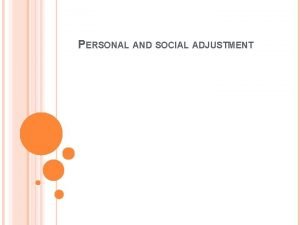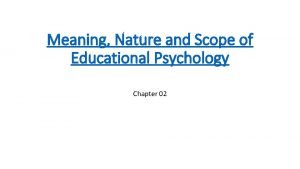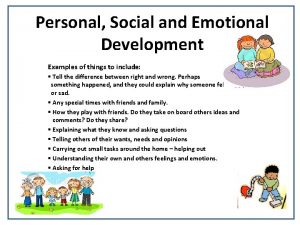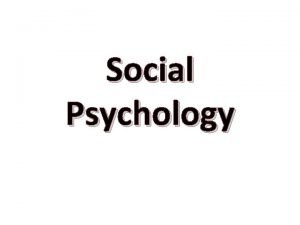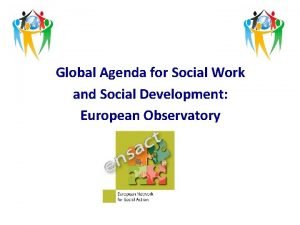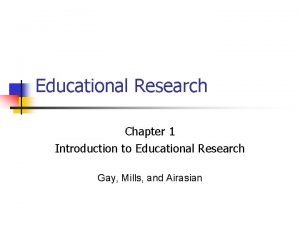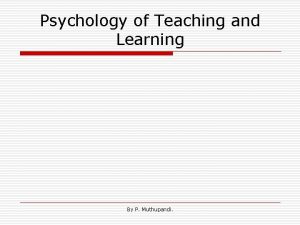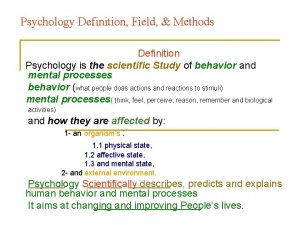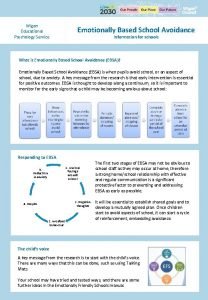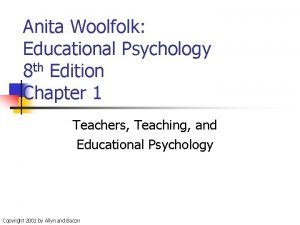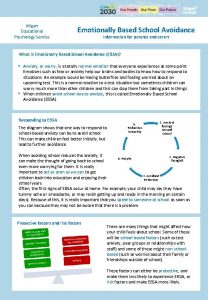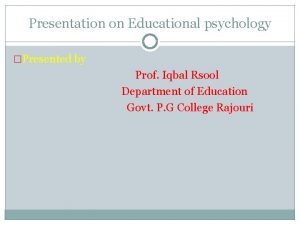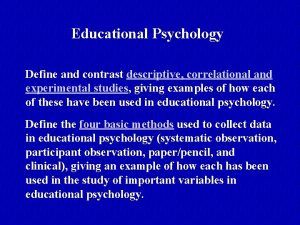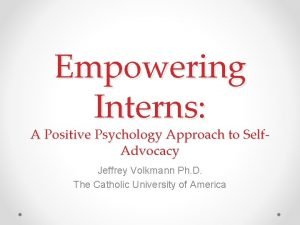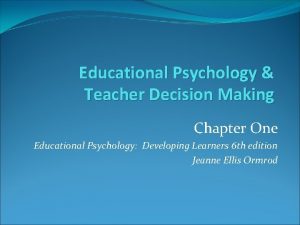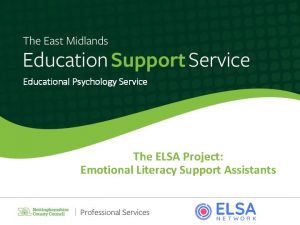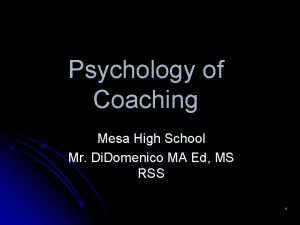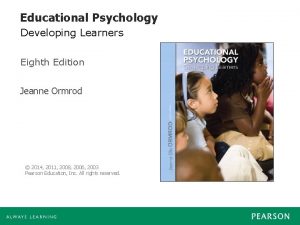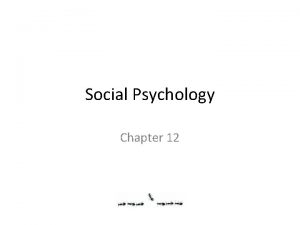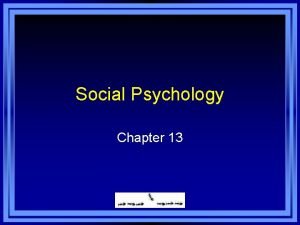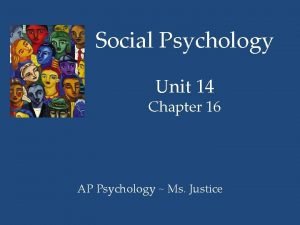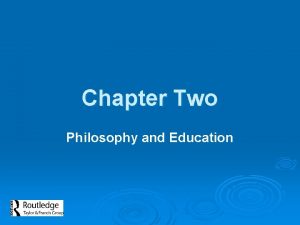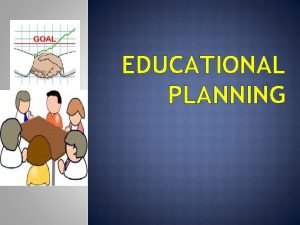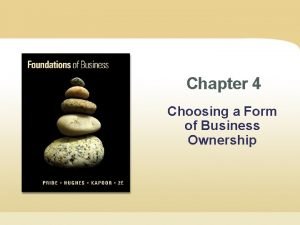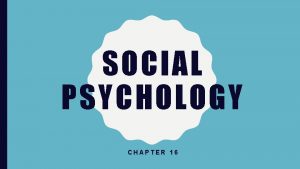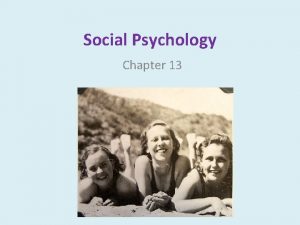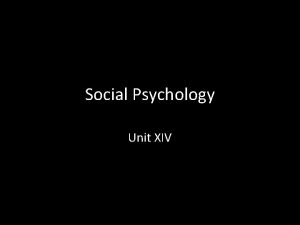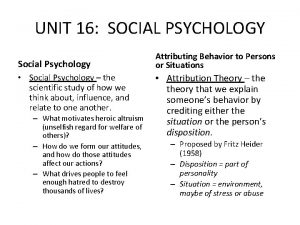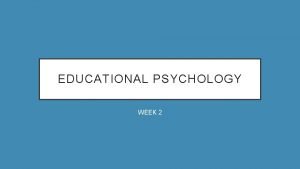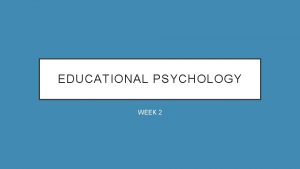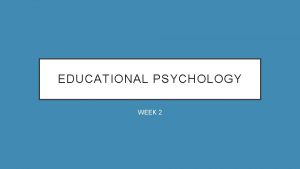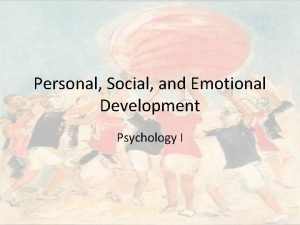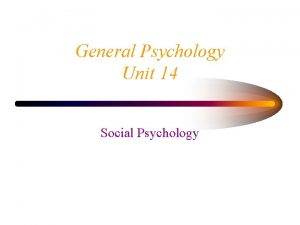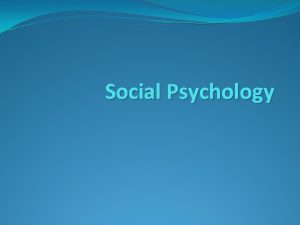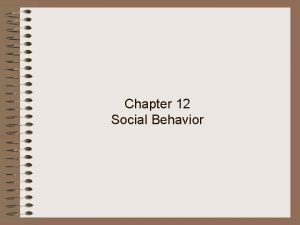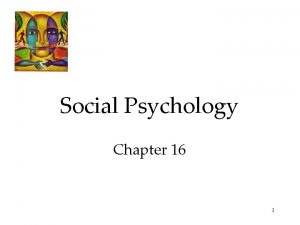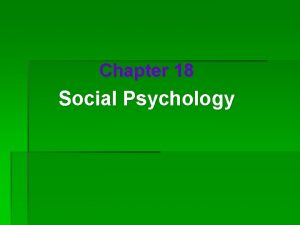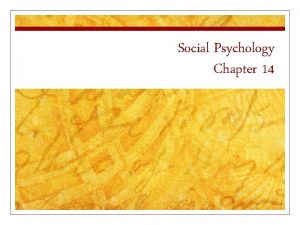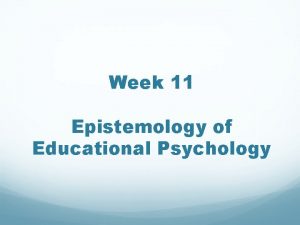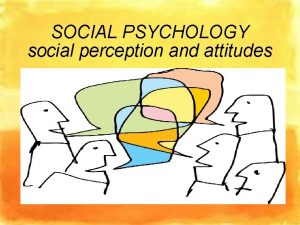Personal and Social Development Chapter Three Educational Psychology




































- Slides: 36

Personal and Social Development Chapter Three Educational Psychology: Developing Learners 6 th edition Jeanne Ellis Ormrod

Personality Development n Temperament n Parenting n Culture n Peers n Self-socialization Jeanne Ellis Ormrod Educational Psychology: Developing Learners, sixth edition Copyright © 2008 by Pearson Education, Inc. Upper Saddle River, New Jersey 07458 All rights reserved.

Temperament n Temperament is the genetic predisposition to respond in particular ways to one’s physical and social environments. n Certain cultural groups encourage certain types of behaviors. n In the classroom, there may be multiple temperaments. Jeanne Ellis Ormrod Educational Psychology: Developing Learners, sixth edition Copyright © 2008 by Pearson Education, Inc. Upper Saddle River, New Jersey 07458 All rights reserved.

Accommodating Students’ Diverse Temperaments n For students with high energy levels, minimize downtime n n between activities Be especially warm and attentive with very shy students When students have trouble adapting to new circumstances, give them advance notice of unusual activities and provide extra structure and reassurance If students seem overwhelmed by noisy or chaotic situations, find or create a more calm and peaceful environment for them Teach self-regulation strategies to students who act impulsively Jeanne Ellis Ormrod Educational Psychology: Developing Learners, sixth edition Copyright © 2008 by Pearson Education, Inc. Upper Saddle River, New Jersey 07458 All rights reserved.

Parents’ Influences n Attachment n Children with secure attachments to their parents are more likely to be amiable, affectionate, independent, selfconfident, and cooperative than those with insecure or no attachments. n Parenting Style n Children of authoritative parents (characterized by emotional warmth, high standards for behavior, explanation and consistent enforcement of rules, and inclusion of children in decision making) are more apt to be happy, energetic, self-confident, likeable, and popular. Jeanne Ellis Ormrod Educational Psychology: Developing Learners, sixth edition Copyright © 2008 by Pearson Education, Inc. Upper Saddle River, New Jersey 07458 All rights reserved.

Cultural Expectations and Socialization n Culture is the behaviors and belief systems of a long- standing social group. n Children develop a cultural “lens” through which appropriate values, behaviors, etc… are determined. n Socialization n Not all cultures endorse the same values and behaviors. n When expectations at school differ from those within culture or at home, students may experience culture shock. Jeanne Ellis Ormrod Educational Psychology: Developing Learners, sixth edition Copyright © 2008 by Pearson Education, Inc. Upper Saddle River, New Jersey 07458 All rights reserved.

Peer Influences n Peers define options available for leisure time. n Peers serve as role models for acceptable behavior. Also provide reinforcement for acceptable behavior and sanctions for not engaging in acceptable behavior n Peer pressure is greatest during junior high n n Peers can encourage fairness and cooperation but may also encourage aggression, criminal activity, and other antisocial behaviors. Jeanne Ellis Ormrod Educational Psychology: Developing Learners, sixth edition Copyright © 2008 by Pearson Education, Inc. Upper Saddle River, New Jersey 07458 All rights reserved.

Self-Socialization n Self-socialization is the tendency to integrate personal observations and others’ input into self-constructed standards for behavior and to choose actions accordingly. n “Do I really want to do that? I don’t think I agree with that, and therefore I won’t engage in that behavior. ” n The decisions a child makes are dependent upon his/her experiences and developmental level. Jeanne Ellis Ormrod Educational Psychology: Developing Learners, sixth edition Copyright © 2008 by Pearson Education, Inc. Upper Saddle River, New Jersey 07458 All rights reserved.

Development of a Sense of Self n Sense of Self: Perceptions, beliefs, judgments, and feelings about who you are Self-worth n Self-efficacy n n Factors influencing the development of self views Previous performance n Behaviors of others n Group memberships and achievements n Jeanne Ellis Ormrod Educational Psychology: Developing Learners, sixth edition Copyright © 2008 by Pearson Education, Inc. Upper Saddle River, New Jersey 07458 All rights reserved.

Developmental Changes in Sense of Self n Childhood n Children focus on physical, concrete characteristics. n Early Adolescence n Children’s focus turns to more general traits, not as much emphasis on the physical. n Late Adolescence n Majority of older adolescents have positive self-concepts and overall mental health. Jeanne Ellis Ormrod Educational Psychology: Developing Learners, sixth edition Copyright © 2008 by Pearson Education, Inc. Upper Saddle River, New Jersey 07458 All rights reserved.

Erikson’s Eight Stages of Psychosocial Development n Trust vs. mistrust (infancy) n Is the world a trustworthy place? n Autonomy vs. shame and doubt (toddler years) n Am I capable of doing things on my own? n Initiative vs. guilt (preschool years) n Is my growing independence supported? n Industry vs. inferiority (elementary school years) n Am I encouraged to make and do things, and then praised for my accomplishments? Jeanne Ellis Ormrod Educational Psychology: Developing Learners, sixth edition Copyright © 2008 by Pearson Education, Inc. Upper Saddle River, New Jersey 07458 All rights reserved.

Erikson’s Eight Stages of Psychosocial Development n Identity vs. role confusion (adolescence) n Who am I? What do I believe in? What path will I choose for myself? n Intimacy vs. isolation (young adulthood) n Can I fully commit to another person? n Generativity vs. stagnation (middle adulthood) n What can I contribute to the next generation? n Integrity vs. despair (late adulthood) n Do I have regrets, or am I satisfied with how my life went? Jeanne Ellis Ormrod Educational Psychology: Developing Learners, sixth edition Copyright © 2008 by Pearson Education, Inc. Upper Saddle River, New Jersey 07458 All rights reserved.

Marcia’s Views on Identity n Different statuses of identity identified by Marcia based on certain patterns of behavior n Moratorium n n Identity Diffusion n n Individual has not made any commitments to a career or belief system nor has he/she considered them or engaged in exploratory behavior. Foreclosure n n Individual is searching for an identity, considering all the options available for a career and belief system. Individual has made a firm commitment to an occupation and belief system but has not engaged in any exploration of other alternatives. Identity Achievement n Jeanne Ellis Ormrod Educational Psychology: Developing Learners, sixth edition Individual has gone through a period of moratorium and has emerged with a commitment to a career and belief system. Copyright © 2008 by Pearson Education, Inc. Upper Saddle River, New Jersey 07458 All rights reserved.

Development of Peer Relationships and Interpersonal Understandings n Peer relationships: n Teach important social skills n Provide emotional and social support n Different types of peer relationships have different impacts Jeanne Ellis Ormrod Educational Psychology: Developing Learners, sixth edition Copyright © 2008 by Pearson Education, Inc. Upper Saddle River, New Jersey 07458 All rights reserved.

Friendships n Friends are peers with whom we spend one- on-one time. n Close friends are similar in age and usually the same sex and have the same interests. n Close friendships foster self-esteem and provide a sense of identity. Jeanne Ellis Ormrod Educational Psychology: Developing Learners, sixth edition Copyright © 2008 by Pearson Education, Inc. Upper Saddle River, New Jersey 07458 All rights reserved.

Larger Social Groups n Initially, the peer group is comprised of a single sex but can be of mixed sex at adolescence. n Peers groups consist of: n Cliques n n n Crowds n n n Exclusive in nature 3 to 10 individuals Jocks and brains Can take form of subculture Gangs n Jeanne Ellis Ormrod Educational Psychology: Developing Learners, sixth edition Cohesive social group characterized by initiation rites, distinctive clothing, etc Copyright © 2008 by Pearson Education, Inc. Upper Saddle River, New Jersey 07458 All rights reserved.

Romantic Relationships n Romantic relationships usually evolve from crushes to real love. n Choices are based on attractiveness or social status. n The benefits of romantic relationships include: n n Companionship, affection, and security Opportunities to experiment with new social skills and interpersonal behaviors n Romantic relationships may also wreak havoc on adolescents’ emotions. n Adolescence may be an especially confusing time for homosexual and bisexual students. Jeanne Ellis Ormrod Educational Psychology: Developing Learners, sixth edition Copyright © 2008 by Pearson Education, Inc. Upper Saddle River, New Jersey 07458 All rights reserved.

Popularity n Popularity vs. high-status n Popular students may or may not hold high status positions but are considered kind and trustworthy by other students. n Rejected students n Viewed as being undesirable social partners n Neglected students n Almost seem “invisible” n Very few positive or negative ratings Jeanne Ellis Ormrod Educational Psychology: Developing Learners, sixth edition Copyright © 2008 by Pearson Education, Inc. Upper Saddle River, New Jersey 07458 All rights reserved.

Social Cognition n The ability to think about how other people are likely to think, act, and react n Highly developed social cognition skills very valuable n Related to the development of a Theory of Mind Jeanne Ellis Ormrod Educational Psychology: Developing Learners, sixth edition Copyright © 2008 by Pearson Education, Inc. Upper Saddle River, New Jersey 07458 All rights reserved.

The Theory of Mind n Childhood: Not until age 4 or 5 do children recognize that another person might have “other thoughts. ” n Early Adolescence: Children recognize multiple feelings and thoughts, even when they are contradictory. n Late Adolescence: Children are more in tune with others’ intentions, and take time to decipher motives and consider other perspectives. Jeanne Ellis Ormrod Educational Psychology: Developing Learners, sixth edition Copyright © 2008 by Pearson Education, Inc. Upper Saddle River, New Jersey 07458 All rights reserved.

Aggression and Social Cognition n There are different types of aggressive behavior. n Physical aggression is more common in boys. n Relational aggression is more common in girls. Jeanne Ellis Ormrod Educational Psychology: Developing Learners, sixth edition Copyright © 2008 by Pearson Education, Inc. Upper Saddle River, New Jersey 07458 All rights reserved.

Aggression and Social Cognition n Proactive Aggression n Initiating aggressive behavior to reach a goal n Results in difficulty maintaining friendships and often being labeled as bullies n Reactive Aggression n Aggressive reaction to provocation or frustration n Jeanne Ellis Ormrod Educational Psychology: Developing Learners, sixth edition E. g. , Columbine Copyright © 2008 by Pearson Education, Inc. Upper Saddle River, New Jersey 07458 All rights reserved.

Possible Causes of Aggression n n Poor perspective-taking skills Misinterpretation of social cues Prevalence of self-serving goals Poor social problem-solving skills Beliefs about appropriateness and effectiveness of aggression Jeanne Ellis Ormrod Educational Psychology: Developing Learners, sixth edition Copyright © 2008 by Pearson Education, Inc. Upper Saddle River, New Jersey 07458 All rights reserved.

Fostering Social Skills n Provide numerous opportunities for social interaction n Plan cooperative activities n Help students interpret social situations in an n n accurate and productive way Teach specific social skills, provide opportunities for students to practice them, and give feedback Label and praise appropriate behaviors when they occur Describe students as having desirable social behaviors Establish and enforce rules for acceptable classroom behavior Jeanne Ellis Ormrod Educational Psychology: Developing Learners, sixth edition Copyright © 2008 by Pearson Education, Inc. Upper Saddle River, New Jersey 07458 All rights reserved.

Moral and Prosocial Development n Prosocial behavior is behavior directed toward promoting the well-being of another. n Includes sharing, helping, and comforting n Morality encompasses prosocial behavior. n One’s general standards about right and wrong n Includes such traits as honesty, fairness, and respect for other people Jeanne Ellis Ormrod Educational Psychology: Developing Learners, sixth edition Copyright © 2008 by Pearson Education, Inc. Upper Saddle River, New Jersey 07458 All rights reserved.

Developmental Trends in Morality and Prosocial Behavior n Children use internal standards to evaluate behavior n n at an early age. Children increasingly distinguish between moral and conventional transgressions. Children’s understanding of fairness evolves throughout early and middle childhood. Children’s ability to respond emotionally to others’ harm and distress increases over the school years. Children increasingly take circumstances into account in their evaluations of behavior. Jeanne Ellis Ormrod Educational Psychology: Developing Learners, sixth edition Copyright © 2008 by Pearson Education, Inc. Upper Saddle River, New Jersey 07458 All rights reserved.

Development of Moral Reasoning: Kohlberg’s Theory n “Why” of decision is the most important, not “what” (use of the moral dilemma). n Kohlberg drew on Piaget’s two distinct stages of moral reasoning. Morality of constraint: Focuses on consequences and authority figures n Morality of cooperation: Focuses on intent n n Kohlberg’s study found stage-like progression of moral reasoning. Jeanne Ellis Ormrod Educational Psychology: Developing Learners, sixth edition Copyright © 2008 by Pearson Education, Inc. Upper Saddle River, New Jersey 07458 All rights reserved.

Level & Stage Preconventional Stage 1: Avoidance of punishment Stage 2: Exchange of favors Age Range Examples Preschool – elementary; some Stage 1: “I would cheat if junior high; few high school I knew I wouldn’t get students caught. ” Stage 2: “I’ll let you copy mine if you do my homework. ” Conventional Few older elementary children, some junior high, Stage 3: Good child Stage 4: Law and order many high school students (Stage 4 does not typically appear until high school) Stage 3: “I’m not going to tell because I want her to like me. ” Stage 4: “You can’t do that because the teacher said no. ” Postconventional Stage 5: Social contract Stage 6: Universal ethical principle Stage 5: “In this case, the rule may be wrong. ” Stage 6: “You shouldn’t lie because it violates the Golden Rule. ” Jeanne Ellis Ormrod Educational Psychology: Developing Learners, sixth edition Rarely seen before college (stage 6 is extremely rare) Copyright © 2008 by Pearson Education, Inc. Upper Saddle River, New Jersey 07458 All rights reserved.

Criticisms of Kohlberg’s Theory n Politically and culturally biased n Originally based only on interviews with individuals from western societies n Gender biased n Originally only studied boys and men n Carol Gilligan’s criticisms of Kohlberg’s theory: Doesn’t include compassion and caring for those in need as “higher development” n Females socialized to stress interpersonal relationships n Jeanne Ellis Ormrod Educational Psychology: Developing Learners, sixth edition Copyright © 2008 by Pearson Education, Inc. Upper Saddle River, New Jersey 07458 All rights reserved.

Factors Affecting Moral Development n Level of moral reasoning n People who exhibit more advanced moral reasoning behave morally. n Guilt, perspective taking, and empathy n Prosocial children are often very empathic and have above-average perspective-taking skills. n Personal motives n Children’s needs and goals come into play. n Self-perceptions n Commitment to moral values is integrated into the overall identity. Jeanne Ellis Ormrod Educational Psychology: Developing Learners, sixth edition Copyright © 2008 by Pearson Education, Inc. Upper Saddle River, New Jersey 07458 All rights reserved.

Encouraging Moral Behavior and Development in the Classroom n Encourage and reward prosocial behavior n Discuss the reasons why some behaviors are inappropriate n Model moral and prosocial behavior n Incorporate moral issues and dilemmas into classroom discussions n Be sensitive to cultural differences Jeanne Ellis Ormrod Educational Psychology: Developing Learners, sixth edition Copyright © 2008 by Pearson Education, Inc. Upper Saddle River, New Jersey 07458 All rights reserved.

Encouraging Moral Behavior and Development in the Classroom n Use induction n Provide practice in recognizing others’ emotional states n Encourage perspective taking, empathy, and prosocial behavior n Expose students to numerous models n Talk about moral issues and dilemmas n Engage students in community service Jeanne Ellis Ormrod Educational Psychology: Developing Learners, sixth edition Copyright © 2008 by Pearson Education, Inc. Upper Saddle River, New Jersey 07458 All rights reserved.

Considering Diversity in Personal and Social Development n Cultural and Ethnic Differences n Strength of ethnic identity fluctuates depending on the context and situation. n Some minority students may have high selfesteem in general but little faith in their academic ability. n Interpersonal skills vary from person to person and culture to culture. Jeanne Ellis Ormrod Educational Psychology: Developing Learners, sixth edition Copyright © 2008 by Pearson Education, Inc. Upper Saddle River, New Jersey 07458 All rights reserved.

Considering Diversity in Personal and Social Development n Gender Differences n Boys tend to have more positive perceptions about their physical appearance. n Boys rate themselves more highly in mathematics, while girls rate themselves more highly in reading and literature. n Girls have smaller groups of friends. n Boys are more likely to be physically aggressive, whereas girls are more likely to show relational aggression. Jeanne Ellis Ormrod Educational Psychology: Developing Learners, sixth edition Copyright © 2008 by Pearson Education, Inc. Upper Saddle River, New Jersey 07458 All rights reserved.

Considering Diversity in Personal and Social Development n Socioeconomic Differences n Children from low-income homes are more likely to have challenges. n Jeanne Ellis Ormrod Educational Psychology: Developing Learners, sixth edition But may still have positive self-concepts, good interpersonal skills, and strong moral standards Copyright © 2008 by Pearson Education, Inc. Upper Saddle River, New Jersey 07458 All rights reserved.

The Big Picture n Standards for acceptable behavior are essential for the optimal development of our students. n Interaction with others provides the impetus for many of our students’ personal, social, and moral advancements. n Development is best fostered within the context of a warm, supportive environment. n Students’ personal, social, and moral understandings are self-constructed Jeanne Ellis Ormrod Educational Psychology: Developing Learners, sixth edition Copyright © 2008 by Pearson Education, Inc. Upper Saddle River, New Jersey 07458 All rights reserved.
 Group polarization in mean girls
Group polarization in mean girls Adjustment psychology definition
Adjustment psychology definition Educational psychology chapter 1
Educational psychology chapter 1 The nature and scope of psychology
The nature and scope of psychology Fundamental attribution error ap psychology
Fundamental attribution error ap psychology Social psychology definition psychology
Social psychology definition psychology Fictional character names
Fictional character names Social thinking and social influence in psychology
Social thinking and social influence in psychology Social thinking adalah
Social thinking adalah Aristotle social psychology
Aristotle social psychology Global agenda for social work and social development
Global agenda for social work and social development Educational research and development
Educational research and development Nature of psychology
Nature of psychology Psychology definition
Psychology definition Wigan educational psychology service
Wigan educational psychology service Anita woolfolk
Anita woolfolk Wigan educational psychology service
Wigan educational psychology service Educational psychology conclusion
Educational psychology conclusion Define educational psychology
Define educational psychology Positive psychology internships
Positive psychology internships Discuss briefly the nature of educational psychology
Discuss briefly the nature of educational psychology Educational psychology
Educational psychology Educational psychology
Educational psychology Cie
Cie Psyc 1504 learning journal unit 1
Psyc 1504 learning journal unit 1 Ormrod educational psychology
Ormrod educational psychology Social thinking social influence social relations
Social thinking social influence social relations Chapter 12 social psychology
Chapter 12 social psychology Chapter 13 social psychology
Chapter 13 social psychology Ap psychology unit 14
Ap psychology unit 14 Social psychology chapter 1
Social psychology chapter 1 Branches of axiology
Branches of axiology Chapter 10 physical development from one to three
Chapter 10 physical development from one to three History of technology ppt
History of technology ppt What are the objectives of educational planning
What are the objectives of educational planning Selecting a form of business ownership
Selecting a form of business ownership Positive psychology ap psychology definition
Positive psychology ap psychology definition

